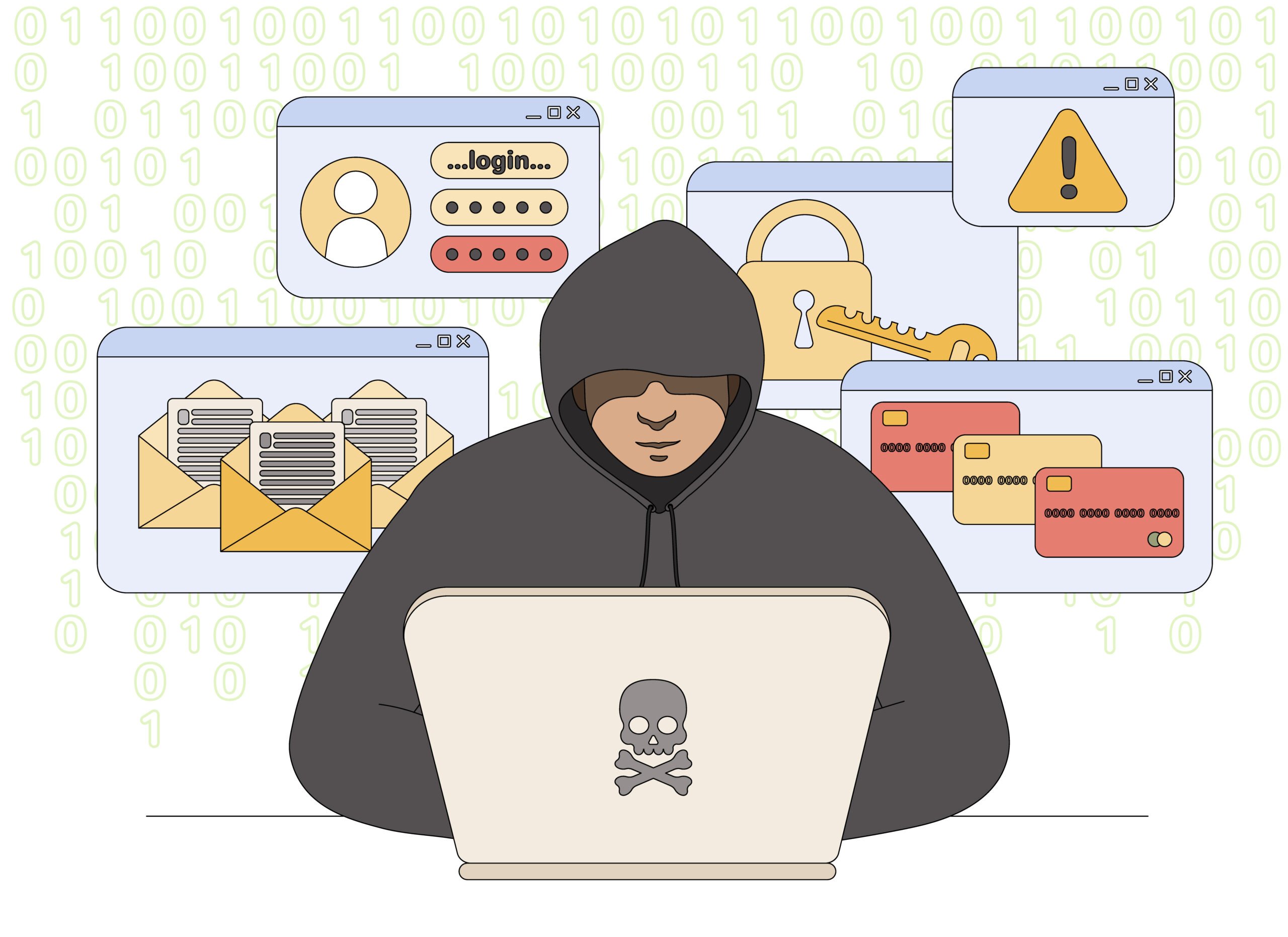Modern organizations face an escalating cyberthreat landscape where human error accounts for 95% of successful attacks. Cybersecurity awareness training has emerged as the cornerstone defense strategy, transforming employees from potential vulnerabilities into active security assets.
This comprehensive training approach educates teams on recognizing phishing attempts, understanding social engineering tactics, and implementing security best practices. As cyber threats evolve rapidly, businesses require systematic awareness programs that not only meet compliance requirements but genuinely reduce risk exposure and strengthen organizational security posture.
Related Topic: What Is Ransomware and How to Stop It Before It Spreads
What is Cybersecurity Awareness Training?
Cybersecurity awareness training is a structured educational program designed to equip employees with the knowledge and skills needed to identify, prevent, and respond to cyber threats. This awareness training transforms workforce members into informed defenders who understand how cybersecurity risks impact their daily work environment.
The primary goal of cyber security awareness training is to reduce human error vulnerabilities while building a culture of security awareness throughout the organization. Training programs focus on teaching employees to recognize suspicious activities, understand social engineering tactics, and implement information security protocols consistently. Training focuses heavily on protecting against social engineering attacks and manipulation tactics that exploit human psychology rather than technical vulnerabilities.
Effective cyber security training looks like interactive modules covering real-world scenarios, simulated phishing exercises, and regular assessment checkpoints. A comprehensive training program includes role-specific content tailored to each learner’s responsibilities and risk exposure levels. Modern cybersecurity programs incorporate hands-on learning experiences, video demonstrations, and practical exercises that reinforce best practices. These educational initiatives typically cover password management, email security, data handling procedures, and incident reporting protocols, ensuring participants develop practical skills they can immediately apply in their workplace environment. In our experience working with hundreds of organizations, the most successful training programs start with clear threat identification.
Related Topic: What is a Firewall in Networking? | Protect Your Network Like a Pro
How Do You Train in Cybersecurity and Create Effective Programs?
Training in cybersecurity begins with identifying specific training requirements based on organizational risk assessment and role-based vulnerabilities. Each learner receives cybersecurity training tailored to their access levels and job responsibilities, ensuring relevant skill development across all departments.
Creating a cyber security awareness program involves establishing structured security awareness and training protocols that address real-world threat scenarios. We’ve found that organizations implementing structured training cycles see 60% fewer security incidents within the first year. The training program development process starts with baseline security assessments, followed by curriculum design that incorporates interactive learning modules, practical simulations, and measurable outcomes. Success depends on educating teams on cybersecurity best practices through structured learning approaches. Organizations must ensure awareness training content remains current with evolving threat landscapes while maintaining compliance with industry regulations and standards.
The security awareness training cycle operates through continuous improvement phases: initial assessment, content delivery, knowledge validation, and performance monitoring. This cyclical approach includes regular phishing simulation exercises and social engineering awareness drills that test learner comprehension in realistic scenarios. Effective programs emphasize safeguarding businesses from phishing scams through practical exercises. The cybersecurity training cycle repeats quarterly or semi-annually, incorporating lessons learned and emerging threat intelligence to maintain program effectiveness and workforce preparedness.
Related Topic: How to Tell If It’s a Scam: Real Phishing Examples Exposed!
Is Cybersecurity Training Worth It? Understanding the Value
Cybersecurity training delivers measurable ROI through significant breach cost reduction and improved threat detection rates. Organizations investing in comprehensive programs experience up to 70% fewer successful phishing attacks and substantially lower incident response expenses. The average data breach costs organizations $4.45 million, making prevention through employee education a cost-effective security investment.
Training requirements for cybersecurity vary by industry, with regulated sectors demanding specific compliance standards. Healthcare organizations must meet HIPAA requirements, while financial institutions follow strict regulatory frameworks. Cybersecurity awareness programs help organizations achieve these compliance mandates while building robust security cultures. Many frameworks require documented training records, regular assessments, and updated curricula addressing current security threats. Small businesses benefit significantly from cybersecurity services for small businesses that include training components.
Security awareness training is mandatory for many organizations, particularly those handling sensitive data or operating in regulated industries. NIST cybersecurity frameworks specifically recommend regular awareness training as foundational security controls. Federal contractors must implement awareness training to maintain compliance with government security standards. Even when not legally required, cyber training provides essential protection against evolving attack vectors, making it a strategic necessity rather than optional enhancement for modern organizations seeking comprehensive security posture. Our clients consistently report that cybersecurity training delivers the highest ROI among all security investments.
Related Topic: Types of Cyber Attacks Explained | Stay Safe Online
What Are the 4 Ds and 5 Cs of Cybersecurity Training?
The 4 Ds of cybersecurity represent core defensive strategies: Deter, Detect, Delay, and Defend. These principles guide cybersecurity awareness programs by teaching employees to deter attacks through vigilant behavior, detect suspicious activities like phishing attempts, delay threat progression through proper protocols, and defend organizational assets. Social engineering awareness forms a critical component of these defensive layers.
The 5 Cs of cybersecurity encompass: Change, Compliance, Coverage, Consolidation, and Cost management. Security awareness training programs must adapt to changing threat landscapes, maintain regulatory compliance standards, provide comprehensive coverage across all user groups, consolidate training resources efficiently, and demonstrate cost-effective implementation. Modern LMS platforms help organizations manage these elements systematically while incorporating multi-factor authentication protocols into training curricula.
The four pillars of cybersecurity include People, Process, Technology, and Governance. Organizations need comprehensive cybersecurity management to coordinate training initiatives effectively. Successful implementation requires programs that automate delivery schedules, optimize user experience during learning sessions, and ensure all employees can access the training materials consistently. These foundational elements work together to create robust cybersecurity frameworks that protect against evolving threats while maintaining operational efficiency and regulatory compliance across all organizational levels. When we help organizations implement the four pillars approach, they achieve measurable security improvements within 90 days.
Related Topic: The Smart Way to Choose a ZTNA Vendor | Right Hand Technology Group
Learning Management Systems and Cybersecurity Training Technology
Nine-week cybersecurity courses typically provide comprehensive certification pathways covering fundamental security principles, risk management, and hands-on technical skills. These intensive programs prepare participants for industry certifications while building practical cybersecurity awareness training capabilities. Information systems security education forms the foundation of these structured learning experiences.
Basic awareness of cybersecurity encompasses understanding common threats, recognizing attack patterns, and implementing protective measures. Modern LMS platforms deliver this fundamental knowledge through interactive modules, video content, and practical exercises. We recommend learning management systems that provide real-time tracking and automated reinforcement for optimal results. Learning management systems enable organizations to deploy simulated phishing campaigns, track progress metrics, and customize content for different roles and skill levels.
Cybersecurity awareness training costs vary significantly based on organization size, content complexity, and delivery methods. Basic programs range from $15-50 per employee annually, while comprehensive solutions with real-time threat intelligence updates cost $100-300 per user. Advanced platforms offering secure online environments for hands-on practice typically command premium pricing. Investment returns justify these costs through reduced incident response expenses and improved security posture. Regular reinforcement through micro-learning modules and ongoing assessments ensures sustained knowledge retention and practical application of security principles across organizational teams.
Related Topic: Master Cybersecurity Awareness Training to Avoid Costly Breaches
5 Pillars of Cybersecurity Framework and Training Integration
The five pillars of cybersecurity framework include Identify, Protect, Detect, Respond, and Recover. These foundational elements guide comprehensive information security strategies that encompass digital assets, physical security measures, and data privacy protocols. Training programs must address each pillar systematically to ensure workforce preparedness across all security domains.
The five basic principles of cybersecurity emphasize defense-in-depth strategies: least privilege access, regular updates, strong authentication, network segmentation, and continuous monitoring. Effective training programs require strong cybersecurity policy development as a foundation. Organizations integrate these principles through role-based training modules that align with specific job functions and access levels. Information technology services teams coordinate implementation across departments while maintaining compliance with industry standards and regulatory frameworks.
Three crucial points of cybersecurity include prevention through education, rapid incident response capabilities, and continuous improvement processes. Government personnel and private sector employees alike must understand reporting requirements for security incidents and maintain security awareness through ongoing education. Cybersecurity frameworks succeed when training programs reinforce these core principles through practical exercises, scenario-based learning, and regular assessment cycles that validate comprehension and skill development across all organizational levels and security responsibilities. Our compliance experts ensure training programs integrate seamlessly with existing security frameworks and regulatory requirements.
Related Topic: How Managed Detection and Response Keeps Your Business Safe from Cyber Threats?
Which Security Awareness Training is Best?
The best cybersecurity awareness training combines interactive content, real-world scenarios, and personalized learning paths tailored to each learner’s role and risk exposure. Top-tier programs integrate gamification elements, micro-learning modules, and hands-on simulations that maintain engagement while building practical cybersecurity skills. Effective awareness training platforms adapt content based on individual progress and organizational threat landscapes.
Cybersecurity awareness training proves highly effective in reducing security incidents, with organizations reporting 60-80% decreases in employees falling victim to attacks. Well-designed programs significantly reduce cybercrime success rates by improving threat recognition capabilities and response behaviors. Regular cybersecurity risk maturity assessment helps organizations measure training program success. Studies demonstrate that comprehensive training reduces successful cyberattacks through improved employee vigilance and proper incident reporting procedures.
Cybersecurity awareness training should occur quarterly at minimum, with monthly micro-learning sessions for optimal retention. High-risk environments require more frequent cyber threat updates and specialized training cycles. Annual compliance requirements often mandate documented training completion, but effective programs exceed these minimum standards. Continuous reinforcement through simulated attacks, security reminders, and updated threat intelligence ensures sustained awareness levels. Organizations experiencing active threat periods may implement weekly briefings to maintain heightened security posture during critical operational phases. Through continuous optimization, we help organizations achieve industry-leading security awareness metrics and sustained behavioral change.
Related Topic: Why Every Growing Business Needs a Virtual CISO (VCISO)?
Final Thoughts:
Investing in effective cybersecurity awareness training is one of the smartest and most cost-effective decisions an organization can make. By combining structured learning modules, simulated phishing campaigns, and ongoing reinforcement, companies can create a strong human firewall that drastically lowers the risk of security breaches. Modern training solutions fit seamlessly into daily operations, delivering measurable improvements in incident reduction and faster threat detection.
Organizations that make cybersecurity awareness training a priority not only strengthen their overall security posture but also achieve better compliance with industry regulations. These programs empower employees to act as proactive defenders against cyber threats, safeguarding sensitive data and maintaining customer trust.
If you’re ready to take your organization’s security to the next level, visit Right Hand Technology Group to explore tailored cybersecurity awareness training solutions. You can also download our Employee Cybersecurity Training Guide, packed with proven strategies, actionable checklists, and hands-on exercises that turn your team into your strongest line of defense. Start building a safer, more resilient workplace today.
Related Service: Cybersecurity Pittsburgh
Frequently Asked Questions
How can I get cybersecurity training for free?
Free cybersecurity training options include government-sponsored programs, online platforms like Cybrary and SANS, and university open courseware. Many secure websites offer introductory modules covering fundamental concepts. Furthermore, learners access quality cybersecurity education from nonprofits, vendor webinars, and community colleges, offering basic knowledge without creating cost barriers.
Does cybersecurity pay well?
Cybersecurity professionals earn competitive salaries ranging from $60,000-$200,000+ annually depending on experience and specialization. Industry certification holders command premium compensation, with local government positions offering stable benefits packages. Entry-level roles start around $50,000, while senior positions and specialized cybersecurity roles in major metropolitan areas frequently exceed six-figure compensation levels.
What’s the best cyber security course?
The best courses align with specific training requirements and career objectives. Evaluate programs based on hands-on exercises, industry recognition, and curriculum relevance. Check the course provider’s URL for accreditation details and student reviews. Quality cybersecurity awareness programs include practical labs, real-world scenarios, and ongoing support resources for comprehensive skill development.
How much training do you need for cyber security?
Also, entry-level cybersecurity jobs need months of training, while advanced roles need years, and regular refreshers keep skills and knowledge updated.
What is the most recognized cybersecurity certification?
The CISSP (Certified Information Systems Security Professional) stands as the most globally recognized cybersecurity certification for experienced professionals. CompTIA Security+ serves as the leading entry-level credential. Also, advanced security programs and certificates like CISM and CISA earn industry respect and greatly help people grow their careers.











